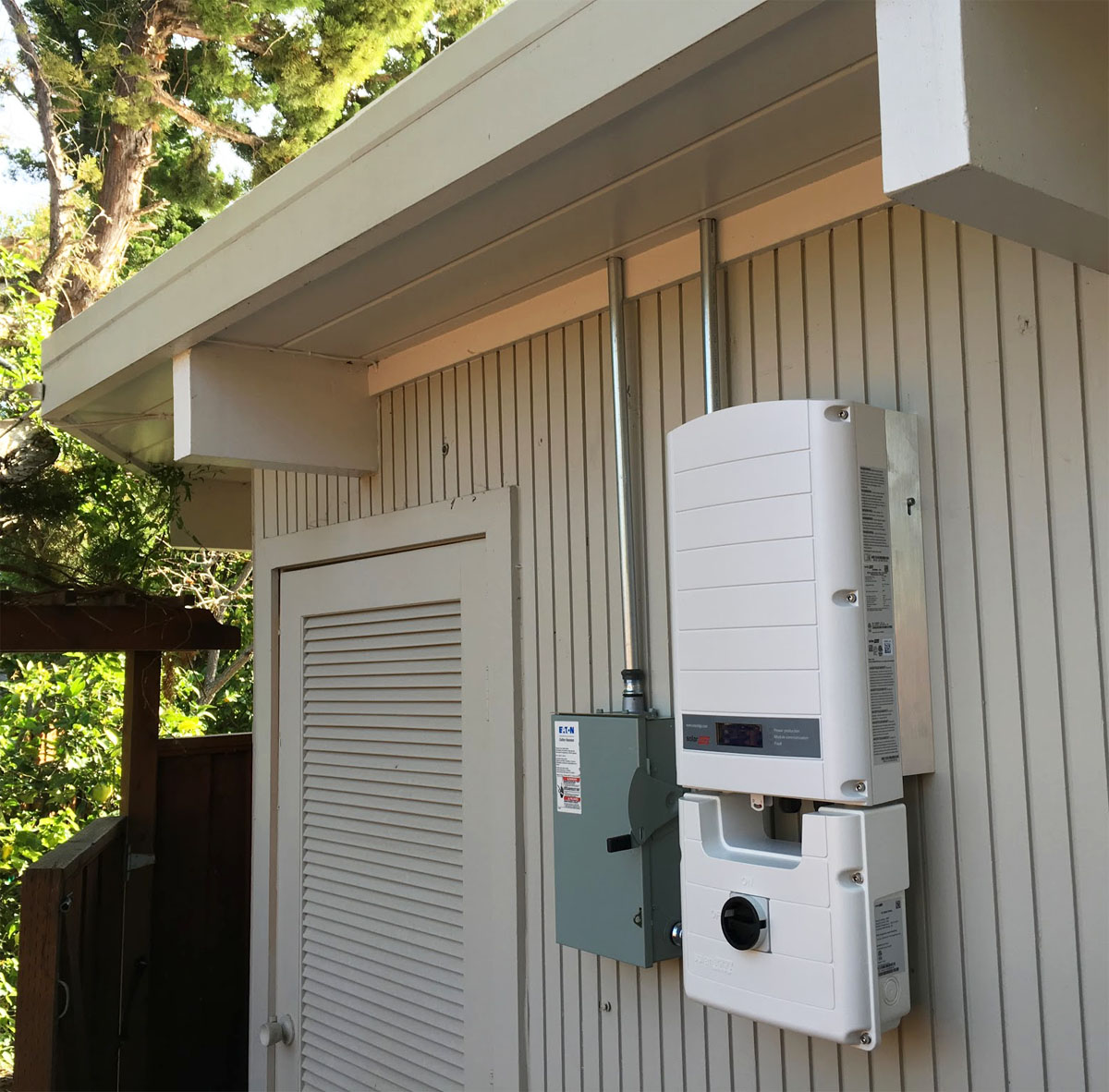Evolving State of Solar Today - Page 2
 |
|
|
 |
|
|
 |
|
|
He suggested consulting a qualified roofing company when considering solar, or straight out using a roofer that is also well versed in solar system installation and troubleshooting.
Another factor is to consider the condition of your roof as you are considering solar installation. Is it also time for roof replacement? Since a roof can't readily be worked on underneath the panel racks, Feriante pointed out, "it's a good idea to install solar together with a roof replacement, since the solar install activity and connections through the roof will ruin most roofs."
"It's also a good opportunity to upgrade your power panel," Feriante commented as an aside, noting that Eichlers were built with only 100-ampere panels instead of the 200 amps generally used now. "A hundred amps is just too little for a house these days."
In general, Feriante recommends that customer go solar if they can afford it, or get financing for the system.
"You can pay the finance company instead of the utility company," he said simply. "It improves the value of your property...There's going to be a long-term payback, so it's a good idea to get solar."
Last December, Congress extended for another three years a federal tax credit totaling 30 percent of your purchase price for a solar array. After 2019, the percent credited will shrink in '20 and '21 before the legislation expires.
Just don't decide to go solar because you're expecting a fat rebate from the California Solar Initiative. Those rebates, as Feriante indicates, have "all but disappeared" for most major utility companies in California.
The State of California also recently added a onetime connection charge for solar customers of between $75 and $150, while other states, such as Nevada, have cut tax credits or added rate hikes for solar homes. In a recent Consumer Report magazine story on this trend, a trade association spokesman explained the utility companies' concern that otherwise "everyone else subsidizes the solar customer."
"We need to make sure the grid can sustain the two-way flow of electricity as increasing numbers of solar customers come online," said Jeff Ostermayer of the Edison Electric Institute.
As it stands now, California customers adding solar power can expect the system to pay for itself in savings within ten years.
"The electrical engineers that know the most about solar are the customers that are most excited about getting a solar installation," Feriante concluded of his customer base. "You just want to make sure it gets done right."




